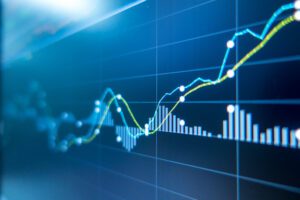Trading 101: CFDs

Every day, millions of trades are executed in different markets across the world, with the total value equalling trillions of dollars.
Among the many different forms of trading is contracts for difference (CFDs), popular with experienced traders.
However, as with any investment, CFDs can be fairly complex and require extensive knowledge on how they operate and when you can use them.
When you can grasp a fundamental understanding of CFDs, you can potentially begin to execute more profitable trades, which both heighten your trading accuracy and minimise your levels of risk involved.
This article will take you through a detailed guide of CFDs, including what they are and how you can incorporate CFD trading into your own investment journey.
What are CFDs?
CFDs are financial derivatives, and can involve the trading of contracts on various assets and markets, speculating on their price values.
When using an expert trading platform for CFD trading, you can buy and sell contracts on an asset, as opposed to owning the underlying asset.
This means that rather than owning the asset, as you would using the traditional trading method, you predict where the asset’s price value will move next. Your trade success is determined by how accurate your speculation turns out to be.
If you open a CFD position on an asset and its price moves in your predicted direction, this will result in a profit. Vice versa, if the price goes against your favour, this will result in losses.
CFDs are used across a wide variety of different financial markets – including foreign exchange (forex), stocks, commodities, and many more – and can therefore be beneficial to various investors trading on different markets.
When you can refine your approach to CFD trading, your potential for profit will be significantly increased across all your trades.
How does CFD trading work?
Log in to your trading platform
The first thing you need to start trading CFDs is an expert trading platform. This is where your entire trading portfolio, access to assets, and trade management takes place.
There are various platforms across the industry for you to choose, but it’s essential that you not only find one that offers CFD trading, but that comes with a range of highly beneficial features to aid you in your trading journey.
This can include benefits such as risk management tools, how-to guides, and trading guidance, for example.
Determine the asset to trade
The next vital thing to do is to determine the asset(s) you want to open a CFD position on. The nature of your asset will depend on your chosen market – the stock market will have shares available, forex will have currency pairs to trade, etc.
Through a CFD trading platform, you also have the offer of leverage trading. With leverage, you can put down a portion of the initial deposit and gain greater exposure to the market.
Different assets will have various prices to open a position, and this will be determined by the leverage ratio.
Be cautious though, as whilst leverage can increase your profits, it also means you will incur losses based on the value of your exposure, not the original deposit.
Once you factor in all these aspects, you can pick the asset that seems most suited to your trading style and strategy.
Open your position
This is when you open your CFD position. There are two different types of positions you can open on a trade, and this all depends on the performance of the asset value in question.
Choosing to open a long (buy) position means you are speculating that the price value of an asset will rise. If the asset value does as you predicted, you will incur a profit from the trade – and a loss if the value decreases.
The second position – which further distinguishes CFD trading from traditional methods – is opening a short (sell) position. This is a speculation that the price will go down, and if it does so, you will gain a profit.
Use technical indicators to assess the performance of your chosen asset, and provide a clearer idea of which position will be more accurate.
Monitor your position till close
The final step of CFD trading is to monitor your ongoing trades to establish an ideal time to close the position.
Different trading strategies will result in varied lengths of active positions. For instance, position trading will result in fewer positions open but for prolonged periods of time — whereas scalping trading will have shorter periods but on more simultaneous positions.
Use alerts from your platform to keep you updated on how your trades are performing, and with close observation of market performance, you will be able to accurately decide when the position is fit to close.
Once you’ve made your decision, close your position as promptly as you can, and hopefully, reap the rewards of a successful and profitable trade.




